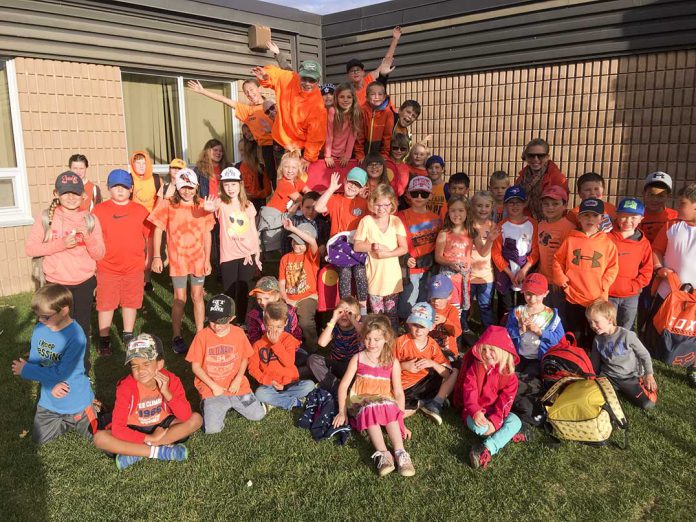One of the most successful reconciliation events in the country may well be coming to an end and unless someone can step up to fill the gap, we will all be much the worse for it.
For several years Kenjgewin Teg Educational Institute in M’Chigeeng has been celebrating the coming of fall with a harvest fair that celebrates the Anishinaabe traditions and culture surrounding the harvest by bringing elementary students together with displays and exhibits that detail those traditions.
Thanks to the persistent urging of the Rainbow District School Board (RDSB) Manitoulin Island trustee Larry Killens (now apparently something of a pariah at the RDSB board table) Rainbow District Schools have been participating in the event over the past few years, with buses from Sudbury making the journey to the heart of the Island to learn about Indigenous ways of the land. This year saw the largest number of schools and their students attending the event ever and anyone travelling to the M’Chigeeng Powwow grounds would have been greeted by the sight of hundreds, if not thousands, of young people wandering the field taking part in events, learning about traditional Anishinaabe medicines, foods, preparations and construction. They were being educated in the culture of this land’s first inhabitants and they were having fun.
The Expositor has travelled to many reconciliation events in the course of any given year since the publication of the findings of the Truth and Reconciliation Committee and most of them have one overriding and common theme—very, very few of the faces of those taking part are white. It is as though the First Nations are to be reconciled with themselves. While there is nothing wrong with that and certainly the celebration of Anishinabe culture and traditions should be encouraged in and among First Nation communities, what is sorely missing from almost all of these purported reconciliation events is the type of cross cultural bridge-building that so desperately needs to take place in this country.
Watching a young Anishinabe student explaining how to weave rushes into a mat, or a non-Native student experiencing a still-hot-from-the-grease bit of scone, freshly baked bannock or corn soup, one is struck by how effortless those connections are being made at the KTEI Fall Harvest.
This is learning that comes without a lecture, without pressure and with a lot of laughter and good humour. The very kind of learning that the experts in the educational field have been trying to build into our educational system—because it is the most effective way of learning known.
The KTEI experiment did not start out, or end up for that matter, as a reconciliation event. Perhaps that is its real strength. It grew organically from what was originally an attempt to bring the Anishinaabe way of learning from the land and about the land to a generation of youth for whom technology and the shockwaves of the residential school system had created a vast divide from their heritage.
But when non-Indigenous students began participating in the event, that learning evolved into a cultural bridge, the like of which we cannot afford to lose.
While recent changes to the way in which federal educational funding flows directly to First Nations will undoubtedly bring a lot positive impact to those communities, the possibility that the KTEI Fall Harvest will not find a new home in a similarly impactful format would be little short of a tragedy.
It is understandable that KTEI must firmly focus on its core mission, and that the size to which the fall harvest event has grown undoubtedly places an unsustainable strain in both financial and human resources, but accidental or not, the value of the KTEI Fall Harvest as a reconciliation event can hardly be overstated—anyone who has had the pleasure of experiencing it first hand could not help but stand with us on this.
Somehow, somewhere, someone must take up the mantle of hosting this event. It will take an organization with significant resources. It will take an organization with a mandate to create those very cultural and educational bridges that exemplified the KTEI Fall Harvest. It will take an organization that has made the commitment to implement the recommendations of the TRC into the educational system. It will take an organization like the RDSB to reach out and partner with First Nations communities and schools, and perhaps KTEI could be induced to help guide those first baby steps, in order to host what is demonstrably a best practices event that can provide inspiration to the world. What an excellent gesture of honouring the Truth and Reconciliation this would be if the local school board partnered with First Nations organizations on Manitoulin to maintain this important resource as a regional experience for students of both distinct cultures.
We fervently urge that this year not be the last year that the non-Indigenous students of the RDSB will have the opportunity to mix and mingle with students from First Nations schools and to discover a different way of learning and a different way of thinking, cultures and traditions, in a non-threatening, non-lecture environment.



